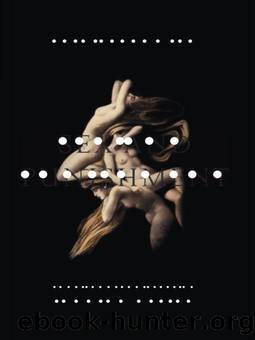Sex and Punishment by Eric Berkowitz

Author:Eric Berkowitz [Berkowitz, Eric]
Language: eng
Format: epub
Tags: General, History, Criminal Law, Law, Social History
ISBN: 9781619020788
Publisher: Counterpoint
Published: 2012-04-12T00:00:00+00:00
Typically the witchesâ misdeeds were announced in detail to the assembled onlookers before the flame was lit. In one Spanish auto-da-fé, whereby twenty-nine witches were set afire (among fifty-nine heretics), the process took two grisly days to complete. The witches had admitted to attending twenty-two sabbats. Said the historian Henry Lea: âAll the grotesque obscenities which the foul imaginations of the accused could invent to satisfy their prosecutors, were given at length, and doubtless impressed the gaping multitudes with the horror and detestation desired.â In addition to the witchesâ sexual adventures, their feasts on corpses were detailed, as well as their destruction of harvests and poisonings of their own children. What Michel Foucault called âthe spectacle of the scaffoldâ was a trance-inducing affair.
The imagined sex lives of convicted witches were also retold in cheap illustrated pamphlets peddled to spectators at executions. These early tabloids offered lurid narratives of seductions by the devil, generously illustrated with woodcuts. As so many of the witchesâ alleged crimes followed set patterns, the printers were able to reuse the woodcuts for multiple executions, changing only the names of the accused in the captions. Armed with images of the witchesâ crimes, the purchaser/spectator could then listen to the womenâs screams, experiencing both moral shock and sadistic titillation. When the execution was over, of course, the pamphlets remained, to be reviewed in private again and again.
The witch craze slowed down at the end of the seventeenth century. Why this fury ended is as mystifying as why it began, but one thing is clear: The use of torture to generate new suspects was starting to produce the wrong kind of people for prosecution. In Würzburg, for example, more than 160 people were tried and convicted of witchcraft from 1627 to 1629. The majority of these victims were lower-class women, but soon there were people from all classes in the torture chambers, including clerics, city officials, doctors, and children. The fervor slowed down when the elite began to fear for their own hides.
The last executions for witchcraft in England took place in 1682. Temperance Lloyd, a senile shopkeeper, was accused of casting spells and having sex with âthe devil in the likeness or shape of a black man.â Lloyd also had âin her secret parts two teats hanging nigh together like unto a piece of flesh that a child had sucked.â She readily confessed, adding that she had indeed suckled a black man who had the mouth of a toad but sometimes changed himself into a bird. Her beggar codefendants also confessed to witchcraft. The jury found them guilty despite the skepticism of the judge, who worried that their confessions were in fact a form of suicide. Thirteen years later, an English lawyer had the nerve to argue in court that belief in witchcraft should be seen as a thing of the past. By 1736, the English laws mandating death for witches were repealed. No longer was it a capital crime to be a witch. From that point forward, it was forbidden (under much less severe sentences) to act like one.
Download
This site does not store any files on its server. We only index and link to content provided by other sites. Please contact the content providers to delete copyright contents if any and email us, we'll remove relevant links or contents immediately.
| Administration & Medicine Economics | Allied Health Professions |
| Basic Sciences | Dentistry |
| History | Medical Informatics |
| Medicine | Nursing |
| Pharmacology | Psychology |
| Research | Veterinary Medicine |
Bioenergetica by Alexander Lowen(1424)
The Child in You by Stefanie Stahl(1200)
No Bad Parts by Richard C. Schwartz(1170)
Noise: A Flaw in Human Judgment by Sunstein Cass R. & Sibony Olivier & Kahneman Daniel(1153)
The Data Detective by Tim Harford(1099)
Chatter by Ethan Kross(1022)
The Science of Rapid Skill Acquisition by Peter Hollins(870)
The Quantum Psychiatrist: From Zero to Zen Using Evidence-Based Solutions Beyond Medication and Therapy by Biswas Dona(832)
Freedom by Sebastian Junger(813)
The Montessori Baby by Simone Davies(788)
Maps of Meaning: The Architecture of Belief by Jordan B. Peterson(705)
The Science of Self-Learning: How to Teach Yourself Anything, Learn More in Less Time, and Direct Your Own Education (Learning how to Learn Book 1) by Peter Hollins(689)
Evolution Gone Wrong: The Curious Reasons Why Our Bodies Work by Alex Bezzerides(672)
Sadomasochism and the BDSM Community in the United States by Stephen K. Stein(652)
Anxiety For Dummies by Charles H. Elliott & Laura L. Smith(635)
Why Sex Doesn't Matter by Olivia Fane(627)
Disconnected by thomas Kersting(621)
Jung - The Key Ideas: Teach Yourself (TY Philosophy) by Ruth Snowden(595)
The Mechanics of Passions: Brain, Behaviour, and Society by Alain Ehrenberg(590)
